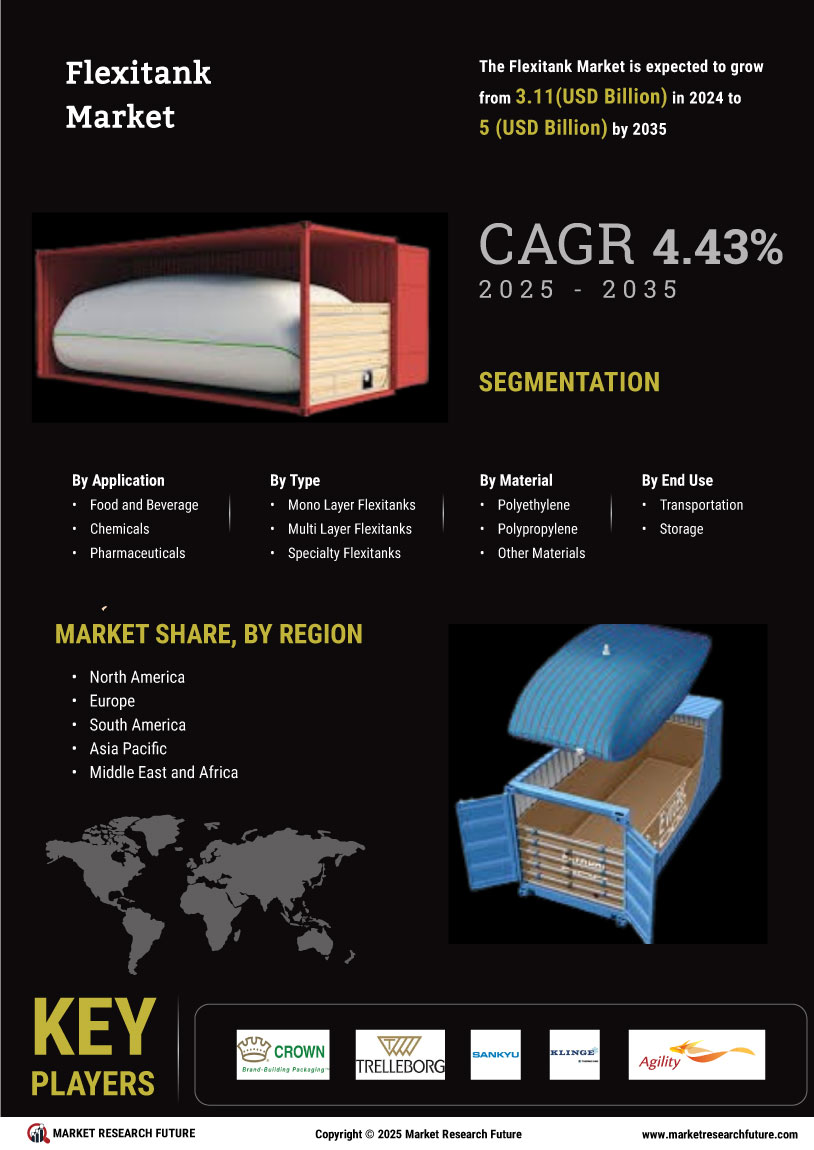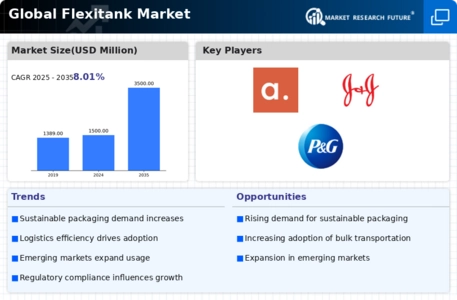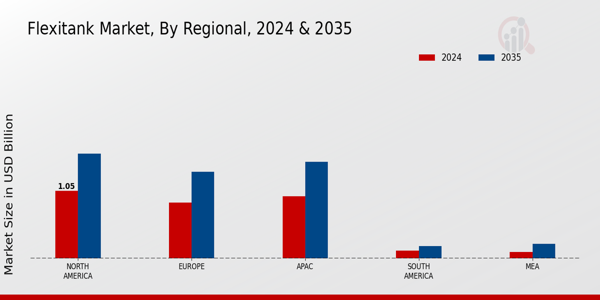Global Trade Expansion
The expansion of global trade significantly impacts the Global Flexitank Market Industry. As international trade continues to grow, the demand for flexible and efficient shipping solutions increases. Flexitanks offer a practical solution for transporting bulk liquids across borders, facilitating smoother trade operations. The rise in e-commerce and cross-border transactions further amplifies this demand, as businesses seek to streamline their logistics processes. Consequently, the Global Flexitank Market Industry is poised for growth, with an anticipated market size of 3500 USD Million by 2035, driven by the need for adaptable shipping solutions in a dynamic global marketplace.
Market Growth Projections
The Global Flexitank Market Industry is projected to experience substantial growth over the coming years. With a market size of 1500 USD Million in 2024, the industry is expected to expand significantly, reaching 3500 USD Million by 2035. This growth trajectory suggests a compound annual growth rate of 8.01% from 2025 to 2035, indicating a robust demand for flexitank solutions across various sectors. The increasing need for efficient bulk liquid transportation, coupled with advancements in technology and sustainability initiatives, positions the Global Flexitank Market Industry for a promising future.
Environmental Sustainability Initiatives
The Global Flexitank Market Industry is increasingly influenced by environmental sustainability initiatives. Companies are actively seeking eco-friendly packaging solutions to reduce their carbon footprint and comply with stringent regulations. Flexitanks, made from recyclable materials, align with these sustainability goals, offering a greener alternative to conventional containers. This shift towards sustainable practices is expected to drive market growth, as businesses prioritize environmentally responsible logistics. The Global Flexitank Market Industry may benefit from this trend, as companies recognize the potential for flexitanks to enhance their sustainability profiles while maintaining operational efficiency.
Regulatory Compliance and Safety Standards
Regulatory compliance and safety standards are pivotal drivers of the Global Flexitank Market Industry. As governments worldwide implement stricter regulations regarding the transportation of hazardous and non-hazardous liquids, companies are compelled to adopt compliant packaging solutions. Flexitanks, designed to meet these safety standards, provide a reliable option for shippers looking to adhere to regulatory requirements. This necessity for compliance is likely to bolster the market, as businesses prioritize safety and risk management in their logistics operations. The Global Flexitank Market Industry may see increased adoption rates as companies navigate the complexities of regulatory landscapes.
Rising Demand for Bulk Liquid Transportation
The Global Flexitank Market Industry experiences a notable surge in demand for bulk liquid transportation solutions. This trend is primarily driven by the increasing need for efficient and cost-effective logistics in various sectors, including food and beverage, chemicals, and pharmaceuticals. Flexitanks provide a viable alternative to traditional shipping methods, offering significant savings in transportation costs. In 2024, the market is projected to reach 1500 USD Million, reflecting a growing preference for flexible packaging solutions. As industries seek to optimize their supply chains, the Global Flexitank Market Industry is likely to witness sustained growth, potentially leading to a market size of 3500 USD Million by 2035.
Technological Advancements in Flexitank Design
Technological advancements play a crucial role in shaping the Global Flexitank Market Industry. Innovations in materials and design have led to the development of more durable and efficient flexitanks, enhancing their performance in transporting various liquids. For instance, improvements in barrier properties and leak-proof designs have increased the reliability of flexitanks, making them more appealing to shippers. As these advancements continue, the market is likely to expand, with projections indicating a compound annual growth rate of 8.01% from 2025 to 2035. This growth reflects the industry's commitment to enhancing product quality and meeting the evolving needs of customers.

















